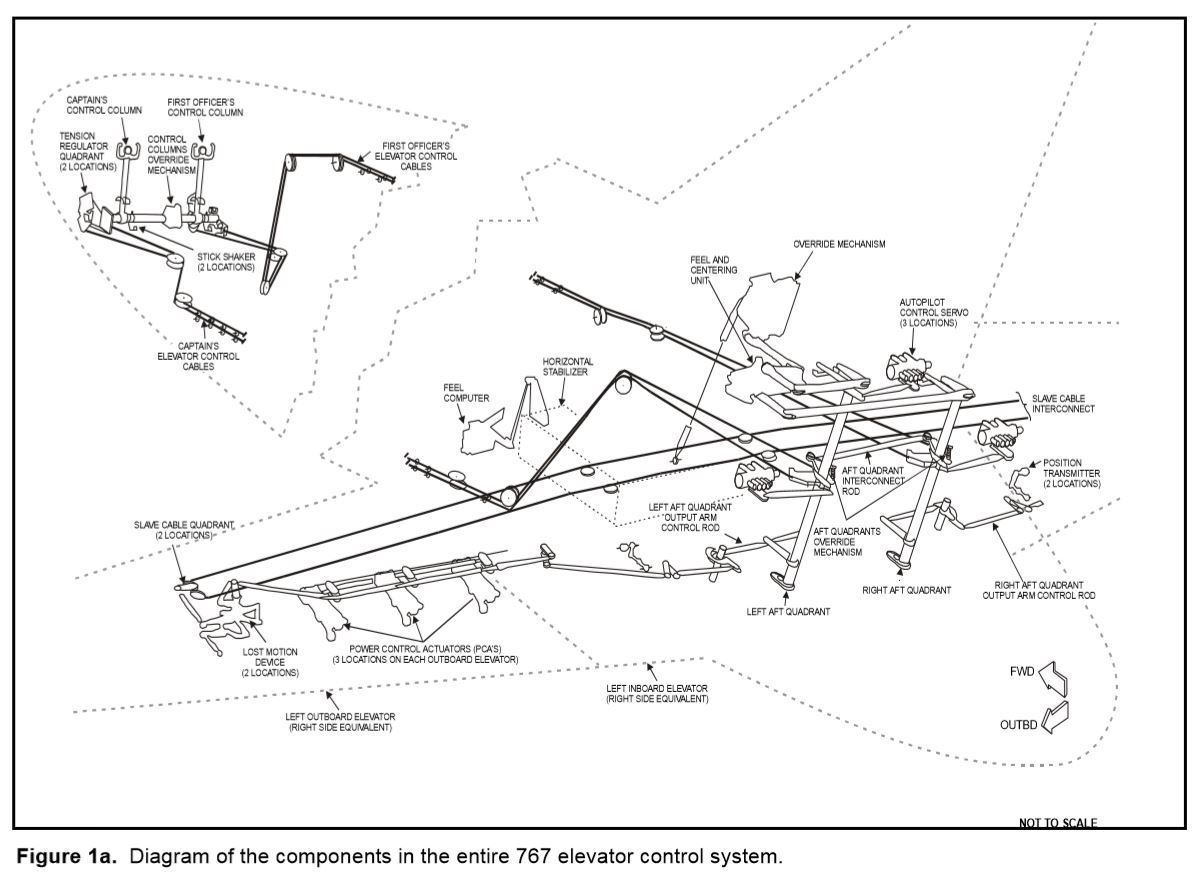The captains and first officers control columns have authority to command full travel of the elevators under most flight conditions and normally work together as one system. However, the two sides of the system can be commanded independently because of override mechanisms at the control columns and aft quadrant. Therefore, if one side of the system becomes immobilized, control column inputs on the operational side can cause full travel of the nonfailed elevator. In addition, in many cases, control column inputs on the operational side can also result in nearly full travel of the elevator on the failed side through the override mechanisms. The elevator PCAs are installed with compressible links located between each bellcrank assembly and PCA input control rod to provide a means of isolating a jammed PCA, thus allowing the pilots to retain control of that elevator surface through its two remaining (unjammed) PCAs

From the Performance Report in the recently released docket:
Figure 7 shows an elevator split between the left and right sides of the airplane: the left elevator is associated with the captain in the left seat, and the right elevator is associated with the first officer in the right seat. The elevator deflections are similar until about 1238:46. At that time, the first officer is heard asking a question about airspeed on the CVR, and the elevators begin to split: the captain begins to pull from 2˚ to 8˚ more ANU elevator than the first officer. The split continues until about 1238:56, about one second after the airplane would have broken out of the reported 3,500 ft cloud layer. Both the captain and the first officer subsequently commanded ANU elevator until impact. (The normal load factor recorded by the FDR in Figure 6 is greater than 4g right before impact.)
There was an earlier rumor of a -4g load factor on the pitchover, this was apparently a typo (or an exaggeration).